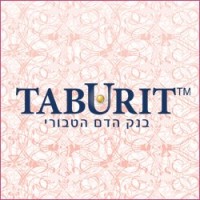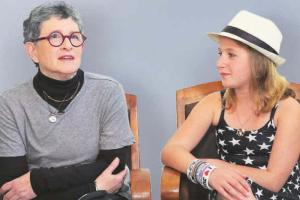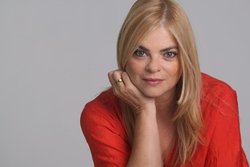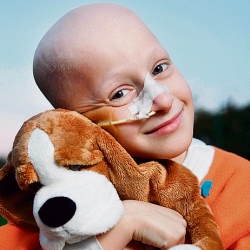You are here
Prof. Joanne Kurtzberg Interview in Israel
The following is a translation of an interview with Prof. Joanne Kurtzberg that appeared in the Israeli newspaper Yediot Aharonot Saturday Supplement 6 April 2016 (Article in Hebrew). Reported by Smadar Shir and translated by Tali Pelz.
 Six years ago, Prof. Joanne Kurtzberg, a Duke University researcher, saved the life of a little girl from Kfar Saba whose struggle against cancer was followed by the entire country. This week the ground breaking physician and 13 year old Amit Kadosh met in Israel, when the Professor came to examine babies with cerebral palsy for an innovative study based on treatment using umbilical cord blood. "I am glad to see science is able to provide solutions for cases which used to be regarded as hopeless", she says. "I only hope that those who continue throwing umbilical cord blood into the garbage will realize that it's a treasure."
Six years ago, Prof. Joanne Kurtzberg, a Duke University researcher, saved the life of a little girl from Kfar Saba whose struggle against cancer was followed by the entire country. This week the ground breaking physician and 13 year old Amit Kadosh met in Israel, when the Professor came to examine babies with cerebral palsy for an innovative study based on treatment using umbilical cord blood. "I am glad to see science is able to provide solutions for cases which used to be regarded as hopeless", she says. "I only hope that those who continue throwing umbilical cord blood into the garbage will realize that it's a treasure."
The little woman who walked down the hallways of the Tel Hashomer Children's Hospital Safra Building, this week, did not attract any attention. The backpack hanging from her shoulders hinted at her being a tourist - perhaps a devoted grandmother from overseas who had come to visit her sick grandchild. But those who are acquainted with Prof. Joanne Kurtzberg and those who need her would be willing to do anything to have a few minutes of conversation with the physician and ground breaking researcher from Duke University who makes miracles.
"I agree to the definition 'miracle' because there is no other way to describe the things that are happening", she says with humility.
When a girl who cannot move her arm uses a fork and eats on her own – that's a miracle. When a boy who hardly spoke starts to sing – that's a miracle. But I'm not responsible for those miracles."
Then who is?
"Umbilical cord blood. 32 years ago, when I was pregnant with my son, I asked my gynecologist why they threw umbilical cord blood into the garbage. I believed it could be used effectively and thought it should be saved, but the gynecologist replied, “let it be, it's science fiction”.
They don't try to get updates on innovations. The gynecologist is the only physician that accompanies a woman during a normal pregnancy and if he doesn't recommend this possibility to her and doesn't encourage her to choose this service, why should she invest money, a lot of money, in something that may seem like a luxury?"
Was it your childhood dream to transplant umbilical blood?
 "Absolutely not," laughs Kurtzberg. "I grew up in New York, like all good girls I played the piano and registered for music studies in a private college. I never thought of medicine. However, in order to finance myself during my studies I worked with autistic children living in a bubble and only rhythm and tones managed to bring them into reality. This radical transition from isolation to connection fascinated me and I decided to learn more about autism to try and find other connections for them."
"Absolutely not," laughs Kurtzberg. "I grew up in New York, like all good girls I played the piano and registered for music studies in a private college. I never thought of medicine. However, in order to finance myself during my studies I worked with autistic children living in a bubble and only rhythm and tones managed to bring them into reality. This radical transition from isolation to connection fascinated me and I decided to learn more about autism to try and find other connections for them."
The study of autism led her to medical school and as she puts it, "one thing led to another." She specialized in pediatrics, completed a sub-specialization in pediatric hemato-oncology and began studying the relatively new field of stem cell transplants. In 1988, she participated in the first umbilical cord blood transplant. "I didn't actually do the transplant, but participated in it because I had brought the patient," she clarifies. "It happened after I had married a neuro-oncologist physician and moved with him to North Carolina. I treated a child born with Fanconi's Anemia, a severe hereditary disease that damages bone marrow. I monitored him almost from the day he was born and when he was five, I had nothing to offer him and had to be the one who had to notify his parents that without a transplant of stem cells originating from umbilical cord blood, he would not live more than six months. His parents agreed to the transplant, the first of its kind, both because they wanted to know that they had done everything possible to save his life and because they had nothing to lose."
The five year old child underwent chemotherapy in order to repress his own blood production system. The umbilical cord blood came from an unrelated donor at the New York Blood Center. "Most of the doctors were Jewish, like myself," she notes, "and the American philanthropist, Rockefeller, financed the operation. The boy is now 32, healthy, working, independent, leading a normal lifestyle. Even though he doesn't require monitoring, he comes to me from time to time. He even got married, but he has an adopted child and cannot bring any children into the world. The treatment for the disease destroyed his sperm cells."
How do you feel every time he walks into your clinic?
"Great satisfaction. I would never see myself as his 'second mother'. I don't expect him to say something such as 'you are the reason I stayed alive and have a family'. But I am glad modern science is able to provide solutions even in cases that were considered hopeless in the past. Over the past 20 years, I have been studying the many aspects involved in the use of umbilical cord blood. Recently, we successfully concluded an innovative study approved by the FDA on treating cerebral palsy with umbilical cord blood which parents had saved for their children at birth.”
"The experiment involved 63 children aged one to six. Half of them received stem cells and the other half a placebo. The children who received stem cells, exhibited extreme improvement over a year. We still haven't published the results of the study but I really hope that this article will receive a lot of exposure amongst physicians and even those who continue to throw umbilical cord blood into the garbage will realize it's a treasure."
Simple intravenous injection
Prof. Kurtzberg ("I should have been retired, but gladly mandatory retirement was abolished in North Carolina") established a pediatric transplant program at the Duke University Medical Center, treating children suffering from cancer and diseases of the blood and immune systems.
"Amit started first grade, on September third she celebrated her birthday and three days later, was diagnosed with leukemia," recalls her father, Yuval Kadosh, who vowed to go to the ends of the earth to save his daughter. The Ezer Mizion non-profit association organized an international campaign for Amit, "but there was no bone marrow in Israel or the world that was suitable for her. Due to the ingenuity of Dr. Bracha Zisser who heads the Ezer Mizion Bone Marrow Bank, we were introduced to Prof. Kurtzberg's research. We started corresponding with her; Rabbi Firer also pulled some strings and we lived in suspense until we received the news that Amit could be treated with stem cells from the umbilical cord blood of an anonymous girl."
Isn't it daunting to give your daughter umbilical cord blood from a stranger?
"Those are the rules. People who donate bone marrow may meet the person whose life was saved due to the donation, but when donating umbilical cord blood the rules are much stricter. All we know is that the umbilical cord blood came from a public cord blood bank in New York. Prof. Kurtzberg conducted the search, she found four samples that could suit Amit, luckily enough she also had an available bed so within four days we left everything and flew to North Carolina. Amit was seven then, underweight, really at rock bottom. The disease had reached its peak. The day after we landed, she went into hospital for tests and they immediately began biological treatment and preparations for the transplant that also included radiation. It took them almost two months to return her to a condition whereby she would be strong enough to undergo the transplant."
The Kadosh family (parents Yuval and Naomi, Amit and her older brother, Omer, who was eight and a half at the time) knowingly entered into the unknown. "We rented an apartment in the complex adjacent to the hospital. Israeli families and students there embraced us and they told us that Prof. Kurtzberg was Jewish. She doesn't speak Hebrew and had no contact with Israel, but we found her to be a nice, extremely motherly woman who instilled hope. She did not treat Amit personally. Our connection was mainly through her deputy, Dr. Presshard, but Kurtzberg would enter Amit's room during the weekly physicians’ visit and managed her protocol from above."
What do you remember from the day of the transplant?
Amit had the transplant on August fourth and a month later, when we were celebrating her seventh birthday there, we received the first indication that the transplant had taken successfully. Her blood counts began to rise, attesting to the fact the body had begun to produce blood cells. Despite that, for three months Amit was placed in isolation, we had ups and downs until the count stabilized, and since she was specified as being at high risk of contracting viruses and infections we were there for a year and four months, until Prof. Kurtzberg told us we were free to return to Israel. Since then, every year in summer we fly to Duke for continued follow-up. There are tests only Prof. Kurtzberg is able to administer because she can compare former tests to updated ones."
How much did the campaign to save Amit cost?
"Over a million dollars and it was all covered by the insurance company. When I was over 20 years old, I purchased a policy and gradually included the entire family into the insurance - and it proved its value when judgment day came. The insurance covered everything – flights, rent, car, living expenses – except for Omer's tuition which was donated by the Duke Jewish community.”
"Since the campaign to save Amit, I underwent a radical change in perception. I went from being marketing manager of a security fencing system company, to become a lecturer on solitary people dealing with crises. I lost 55kg, stopped smoking, became an athlete, I have already participated in a half-marathon and intend running a full-marathon. I wrote a book Stem Cells, that sold over 7,000 copies and in all my lectures at schools, military and private audiences, I emphasize the importance of medical insurance. I say it doesn't matter where you place it, just make sure you have medical insurance."
 Amit is now 13½, an eighth grade student in the Kfar Saba Democratic School. "Of course I remember being ill and flying to Duke and everything I underwent there, but I have felt like a normal girl for a long time now," she says. "And since I want to be treated like a regular girl, I prefer to distance myself as much as possible - from cameras, interviews and anything relating to the media. Sometimes my father tells me there is something important for me to participate in, in order to increase awareness of umbilical cord blood transplants - and then I agree”.
Amit is now 13½, an eighth grade student in the Kfar Saba Democratic School. "Of course I remember being ill and flying to Duke and everything I underwent there, but I have felt like a normal girl for a long time now," she says. "And since I want to be treated like a regular girl, I prefer to distance myself as much as possible - from cameras, interviews and anything relating to the media. Sometimes my father tells me there is something important for me to participate in, in order to increase awareness of umbilical cord blood transplants - and then I agree”.
"I agreed this time because I remember you came to our house to write about my story and my disease. I remember you brought me a book and I now read this book to my little brother, Ido, who is almost 4 years old."
"Ido is the third child in our family whose name begins with the Hebrew letter ayin" adds her father. "Omer, Amit and Ido. With the two older ones it didn't cross our mind to save the umbilical cord blood. When Ido was born we didn't hesitate for one second, we saved it."
Last Saturday, Amit and her parents met Prof. Kurtzberg. "We wanted it to be something intimate and modest," emphasizes the father. "Of course I was excited to meet Prof. Kurtzberg", says Amit. "The last time I met her was during the last summer vacation, when my mother and I flew to meet her, and I was glad to meet her in Israel."
Do you remember her from the time of the transplant?
"Only vaguely. If I met her on the street I'm not sure I would recognize her, but mom and dad told me she was in charge of the department and my doctor consulted with her every time he had to make an important decision. I made a three-picture collage for her – pictures of me before and after the transplant, and a photo of the syringe that we keep at home. When she asked how I was, I said 'good' and smiled. She smiled back at me."
The results were immediately visible
In recent years, new parents are urged to save umbilical cord blood, rich in stem cells that potentially can become any tissue in the body and serve for a huge variety of life-saving purposes. The umbilical cord blood collection process begins in the delivery room: after the placenta is removed, a needle is inserted into the umbilical cord and 100mg blood is withdrawn. The special blood is collected into a bag with a clotting substance, frozen in liquid nitrogen and keeps for many years.
Parents are faced with two possibilities – to make a donation to a public umbilical cord blood bank where the donation will be kept for free, for the public good and will be given to anyone found genetically compatible; or to save it in a private blood bank for payment, ensuring that the blood sample will only be available to family members if they require a transplant in the future.
Prof. Kurtzberg was invited to Israel by Amnon Pelz, CEO of Taburit, Israel's leading private company that preserves umbilical cord blood, operating at Tel Hashomer. "We are in constant touch with Prof. Kurtzberg who is also on the company's scientific committee. Some of the children whose umbilical cord blood was preserved in our facilities have already gone to her, or to be more precise - have received treatments as part of her research. She is often frustrated when she faces families which don't have enough money to cover the transplant."
According to Pelz, "last December the Ministry of Health included in the medication basket, 50 families with sick children whose mothers had become pregnant, in order to receive umbilical cord blood donations from their babies. The Israeli medical basket will pay to preserve their younger siblings' umbilical cord blood."
In the course of her short visit to Israel ("only three days, I cannot afford to be absent from the hospital for much longer," she apologizes) Kurtzberg met Dr. Omer Bar Yosef, a pediatric neurologist from Safra Hospital, and four babies with cerebral palsy to check whether they were suitable for her clinical research.
"Premature birth, damage that occurs during pregnancy and injuries while giving birth. The only treatment we can offer children born with cerebral palsy is hypothermia – chilling the body to a temperature of 34 degrees centigrade, preventing the brain damage that occurred during childbirth from getting worse. However, if the brain damage was not diagnosed within the first six hours, there is nothing we can do. Kurtzberg is offering treatment with their own umbilical cord blood to two groups – children who underwent brain damage during birth and children aged one to six years with cerebral palsy. Treatment with their own umbilical cord blood does not require chemotherapy and promotes healing processes in the damaged brain tissue. The additional advantage is that it is not time-dependent."
M, the girl's mother, says two years ago she gave birth to test tube baby twins. "The pregnancy was normal. In the 37th week I arrived for a pre-scheduled Caesarian section and both were born with a good weight, over two kilos each. The day after giving birth, when I got blood transfusions and was in bed, my husband was in the babies' room and saw one of them, Naomi (pseudonym) begin to go blue and suffer convulsions. He called the doctors who gave her emergency treatment and told us the baby had suffered a stroke."
Do they know why?
"There are several assumptions and we are still trying to find out. We may never know the reason. In intensive care, Naomi underwent an MRI scan that showed damage to the left side of the brain that controls the right side of the body, but we were unaware of the depth and width of the damage. At two months, we began physical therapy and hydrotherapy treatments accompanied by parental guidance to strengthen the damaged side. For example, when she lifted her left arm we tried to get her to lift her right arm as well."
During pregnancy, M had read books about raising twins and was aware she should not compare them to each other, "but when you come home with two girls – one healthy and the other with cerebral palsy – you cannot but notice the differences. Naomi was six to nine months behind her sister. It was expressed in crawling, sitting, walking, murmuring, making sounds, facial expressions – all the milestones babies go through."
Luckily, M had saved the twins' umbilical cord blood, as she had done with her eldest son, now six years old. "During pregnancy I saw notices in the hospital and said to myself, 'if it won't help it won't do any harm, except affect our pocket'. We paid NIS 8,000 for each child. It's a lot but those are our priorities. My motherly instinct instructed me to save."
Only when the twins were six months old, did M begin to find out whether the umbilical cord blood she had saved would be able to help Naomi. "Until then I was in a type of shock and coping with the treatment of a child with delayed development", she admits. "Amnon Pelz told me about the research taking place at Duke University and suggested that I should check whether Naomi could take part in it, but I rejected the idea. I didn't fancy flying to the USA with Naomi and having to leave my husband with two children. I wanted Naomi to undergo treatment in Israel, enabling me to receive support from family and friends. I applied to the hematological department at Tel Hashomer and the doctors said they did not see any safety problems since it is a procedure that resembles the routine procedure applied to children with cancer. I didn't know the road would be long."
Why did it take so long?
"Because they didn't know whether to call it a transfusion or transplant, they had to obtain permission from the Helsinki committee, the question of financing it arose, the paperwork and signatures took a long time, and even when we were done with the red tape Naomi underwent a test for tissue compatibility to ensure the umbilical cord blood was actually hers. The transplant took place on 7 February. It was a long and exhausting day. She first underwent neurological tests and physical therapy tests which grade various actions to have ‘before and after’ comparisons. During the tests, the umbilical cord blood portion was thawed. She received a preparation to prevent nausea which put her to sleep, and at noontime when she was fast asleep, she was connected to the transfusion, a small bag that trickles slowly."
She relates that the results were immediately apparent.
Two months ago she was only able to say 'daddy' and 'elephant'. When I said to her, 'say mommy' she looked at me with gaping eyes. Now she repeats words I say to her and speaks almost like her sister. In the past, when I would take a doll and put it in its place she would not understand it was a game to tidy the room. Now when I take one doll she brings the second and third. That is a significant cognitive change, the girl understands and is able to look forward, beyond the present moment."
"Closing a circle"
This week, M met with Prof. Kurtzberg ("I had the honor of meeting the person behind the study, she explained the processes to me in a laid-back, cautious manner") and described the changes Naomi had undergone. "I am realistic", she said. "I don't expect Naomi to return to the womb and emerge one hundred percent well. Cerebral palsy is cerebral palsy, but it sounds logical to me that blood from Naomi's body, before the stroke, is healing her. We haven't reached first grade yet and nobody knows whether she will learn to read and write, but I focus on every little thing that could improve her quality of life.”
"I watched Prof. Kurtzberg's video clips. When a boy in a wheelchair begins to walk, it's something you cannot miss. I describe psychological and cognitive changes Kurtzberg hasn't studied in depth yet, but Naomi comes to the Tel Hashomer Child Development Institute and there too, they admire the significant improvement. Her mind is more elastic, following the verbal improvement, her motions have also improved too and we are optimistic."
She is conducting two other studies simultaneously: use of siblings' umbilical cord blood on children with cancer and use of umbilical cord blood on grandparents with strokes. Kurtzberg explains that for using umbilical cord blood from a strange donor four out of six parameters must be compatible, so one doesn't always need a donation from a relative.
Why does the use of umbilical cord blood from a public bank, a strange donor, require anonymity?
"American parents who don't want or cannot pay $2,000 for private collection of their babies' umbilical cord blood plus $100-200 a year for saving the blood in a commercially owned bank at minus 180 degrees centigrade, donate their baby's umbilical cord blood to a public bank. Since the donor is a minor who cannot give his consent to save his umbilical cord blood nor to its donation, a decision was made that public banks would be anonymous."
Have your children saved their children's umbilical cord blood?
"Sadly, I am not a grandmother yet. My son is a lawyer and he usually listens to me. My daughter is in public relations and she does the exact opposite of what I advise her to do. But they are aware of my research, partners to my success, and I am sure they will do the right thing."
 Do you encourage parents of a sick child to bring another baby into the world in order to use its umbilical cord blood?
Do you encourage parents of a sick child to bring another baby into the world in order to use its umbilical cord blood?
"No", she replies determinedly. "I didn't see the movie My Sister's Keeper because I think it is immoral. If parents want to get pregnant and bring another baby into the world – that is fine with me. But a child should be brought into the world for love, not in order to donate spare parts."



 Six years ago, seven year old Amit Kadosh from Kfar Saba came to the center which she (Prof. Kurtzberg) managed.
Six years ago, seven year old Amit Kadosh from Kfar Saba came to the center which she (Prof. Kurtzberg) managed.
 Amnon Pelz, CEO of Taburit
Amnon Pelz, CEO of Taburit